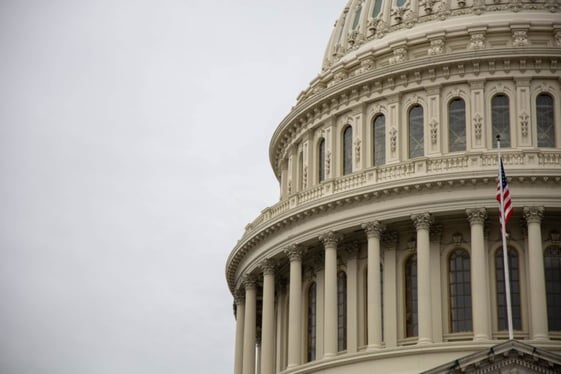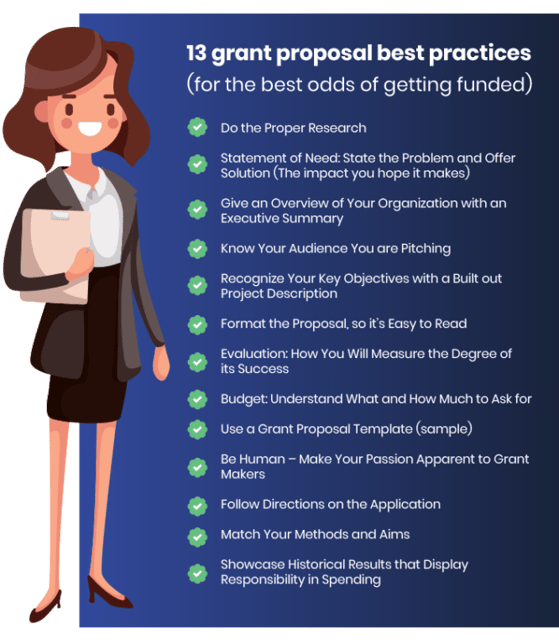There are a lot of Federal grant opportunities out there — if you know where to look and what to do. Finding the right funding, writing the perfect grant application, and nailing post-award management is all part of the big picture.
As a leading provider of grant management solutions, we understand the need to tailor your grant management software to your industry’s nuances. We also recognize that it is just as important to understand the approach you need to take during the application process to cater to each unique grant funding type.
Understanding the similarities and differences between the four main types of Federal grant funding will help you achieve the best results. This article will give you an understanding of the distinct Federal funding structures as you search for sources of grant revenue.
Four Types of Federal Grant Funding to Achieve Your Mission and Reach Your Goals

1. Competitive Grant – Based on the Merits
Also known as “discretionary” funding, this type of grant is awarded based on a competitive process, which includes proposal selection based on a single reviewer or a team of reviewers. Financing of this type is determined by the merits of the application and is not predetermined.
Examples of competitive grants can include funding for arts and humanities grants, some tuition programs available to students, and scientific research.
Here, it is crucial to understand the grant’s criteria to ensure your application is as competitive as possible. In some cases, you may communicate with the organization awarding the funding to have any questions resolved.
2. Formula Grant – Based on Predetermined Award
Unlike a competitive grant, formula grants are awarded to recipients who are predetermined, and the term “formula” refers to the way the grant funding is allocated to recipients. Formula grants, in contrast, are non-competitive.
Legislation and regulations set the formula for this type of funding, so funders must adhere to that formula when awarding grants. Normally, the funds from formula grants are awarded among the States by a specific formula. Next, the choices of which projects to support are made on the local level and funding is recurring. All eligible applicants who meet the minimum requirements stated in the application process are entitled to receive funding.
Examples of formula grants include the Federal governments’ contributions to State and local governments for programs such as Medicaid health insurance, education, and transportation infrastructure.
So, what does the formula include?
In short, it is different for every program. This means it’s essential that you research the different government agency websites and the authorizing legislation.
3. Continuation – Renewal Grants
Like its name implies, continuation grants offer current award recipients the option of an extension or renewal of existing program funding. This can apply to one or more additional budget period(s) renew grants that would otherwise expire, according to Grants.gov. Depending on the grant program, some can be restricted to existing grantees only, whereas some encourage applications from both new applicants and current grantees.
Because continuing applications often receive priority for continuation funding grants, it’s good to keep in mind that if you’re a new application, entering into a partnership with the currently funded entity could be beneficial.
4. Pass-Through Grants – Issued by a Federal Agency

Federal agencies issue pass-through grants to a State agency or institution. From there, they transfer the funds to other State agencies, units of local government, or other eligible groups per the award eligibility terms. [source]
Under this funding structure, States have the option to distribute these funds as competitive or non-competitive, based on terms and authorizing legislation of the primary award. This gives the State governments both flexibility and autonomy over the use of Federal grant funds.
That said, prospective applicants must keep in mind that they’ll need to search and apply through their State’s grants office for pass-through grants.
The terms and audit regulations are established by the initial authorizing agency or institution, often referred to as the “prime recipient,” whereas the secondary recipients are referred to as “sub-recipients.” The prime recipient then issues the sub-awards as either competitive or non-competitive awards dictated by the initial terms and authorizing legislation.
How To Set Yourself Up For Success With the Different Types of Grant Applications

There are plenty of similarities and differences that distinguish competitive, formula, and continuation grants. If you are new to the world of grant writing, it’s important to hone in on how each type of funding differs, so you can determine which is best for your mission.
Competitive Grant Applications
Competitive applications are for foundation or government funding.
Usually, the foundation funder will post an online announcement regarding the grant, or a government agency will issue either a Notice of Funds Availability (NOFA) or a Funding Opportunity Announcement (FOA). These announcements are critical because they detail the specific requirements that one must address in the grant application.
Often, Federal healthcare funders like the National Institutes of Health (NIH) refer to these opportunities as “discretionary grants” since there is some discretion involved in deciding which applicants should be awarded the grant.
Adversely, Federal agencies are much more calculated with their requirements than other types of funders. They are also more specific with their priority (also known as points) that they award to each selection of the grant application and how they rank the application.
Formula (Non-competitive) Grant Applications
Formula grants, also known as non-competitive grants, are often carried out when legislation authorizes a unique or specific grant program.
As discussed prior, formula grants must be given to every organization or individual eligible for them. Normally, the funds from formula grants are awarded among the States by a specific legislated formula. Next, the choices of which projects to support are made on the local level and funding is recurring.
In the past few years, funding for these types of grants has decreased, but as stated before, eligible applicants that meet the criteria of the preset formula or standard will receive funding.
Continuation Grant Applications
Continuation grant applications are commonly requested in scenarios where the funding is available for successive budget periods in a multi-year project. Funders assess applications for this type of funding on three criteria:
- Available funding
- Performance during the initial year of the grant
- The continuation of funding is in the best interest of the Federal government
The best way to determine your continued funding success with a continuation grant is to ensure that you’re performing towards the determined goals during the first year of the grant, and you’re staying compliant with all of the necessary reporting requirements and any other criteria.
For example, suppose your program is not hitting the objectives you have outlined with the funder. In that case, you’re not regularly turning in progress reports, or you’re not following up with funder’s requirements, so you could be in danger of losing the multi-year grant project.
We’ve covered the different applications… what’s next?
Now that you understand the different applications for these different types of grants, you have the tools you need to set yourself up for success in the long-run and help you achieve your mission.
If you’re applying for pass-through funding, be sure to read the funding announcement thoroughly to determine what type of grant you are applying for correctly.
Or, if you are planning to apply for a competitive grant, it’s probably best for you to target your efforts toward creating a compelling narrative in your application that sets you apart from other applicants.
Finally, if you’re applying to a non-competitive formula or continuation grant, you usually are only required to submit the necessary requested materials.
Best Practices to Progress Your Opportunities
The grant proposal process is becoming increasingly competitive. Below we offer actionable tips on how to draft a grant proposal that has the best odds of getting funded.

Conclusion
Understanding these four different grants will help you determine which Federal funding is the right one for you. It will also help you ensure your application is in its best shape possible to maximize your chances of success with funding.
As a leading provider of grant management solutions, we understand it can be daunting to stay on top of your grants, and ever-changing legislation doesn’t make it any easier.
Utilizing a grant management system like AmpliFund is the key to helping organizations like yours most effectively spend your grant dollars, measure the performance of the funds you receive, and maintain communication and transparency within your organization.
If you are a grant seeker ready to experience more transparent internal communication and better revenue drawdown, see if AmpliFund could work for you and request a demo.
Topics: Local, Drive Best Practices, Tribal, State

